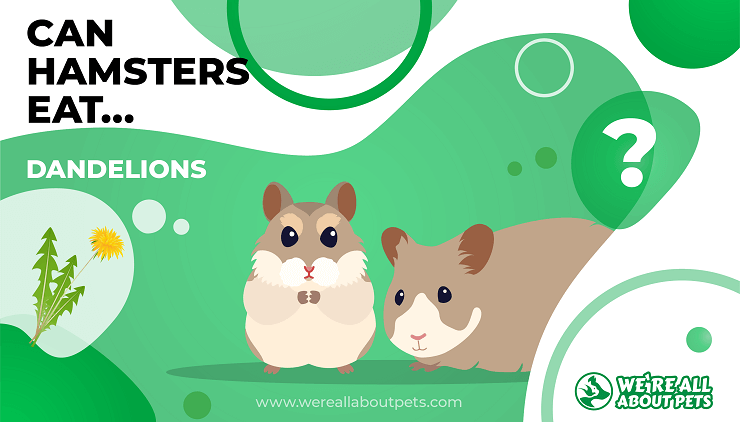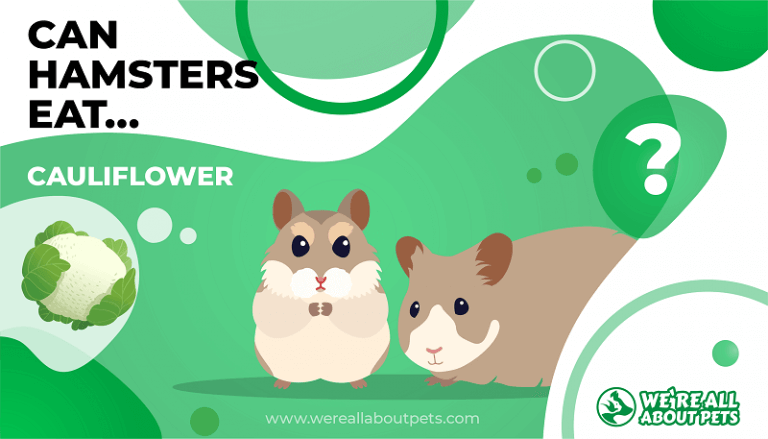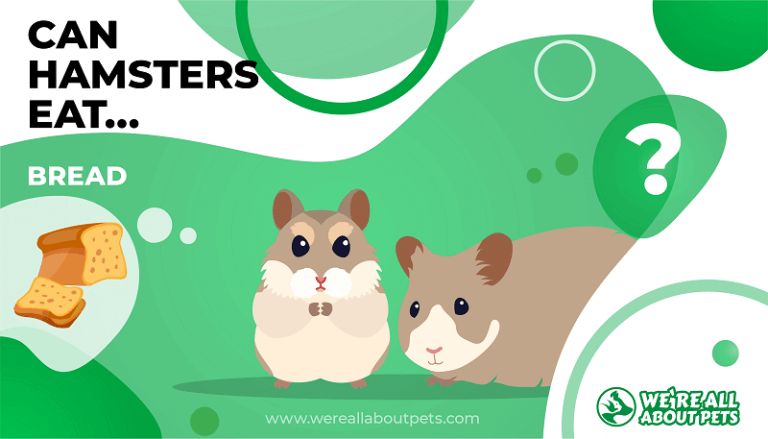Winter White Dwarf Hamster: Care, Temperament & Nutrition
This page contains affiliate links. We may earn money or products from the companies mentioned in this post through our independently chosen links, which earn us a commission. Learn More
Winter white dwarf hamsters, also known as Russian dwarf hamsters or the Siberian hamster, are a small species of hamster much loved by hamster owners. Only around half the size of another common hammie, the Syrian hamster, they are fairly easy to care for and make good pets even for a first-time hamster owner. Read on for more information about this hamster species.
Appearance
Winter white dwarf hamsters (Phodopus sungoros) are very small, only measuring around 3 inches long with a compact body shape and the classic hammie cheek pouches. Their coat color is usually gray/brown but turns white in winter if exposed to the short winter daylight pattern.
They are originally from Mongolia, Kazakhstan and China, so are adapted to being camouflaged in the snow. They usually have a black dorsal stripe along their back.
They are easily confused with the more common Campbell’s dwarf hamster and can be mislabelled at pet shops with the Campbell and the Winter White being mixed up as they are physically very similar.
They are also sometimes called the Djungarian hamster, although this name is more commonly used for the Campbell’s dwarf hamster. Winter whites tend to have a rounder body shape and a thicker, darker dorsal stripe. The Campbell also doesn’t change their fur as winter approaches.
Temperament
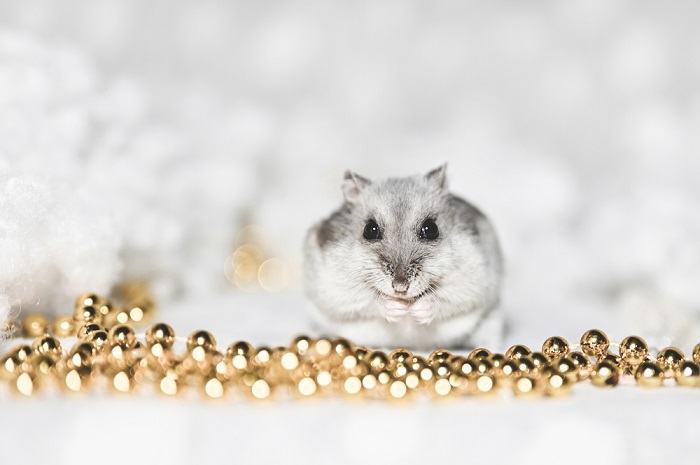
Winter white dwarf hamsters can make good pets, even for first-time pet owners. They are docile and generally easy to handle, although as they are small and quick they may be less suitable for small children.
This Siberian hamster, like all species of hamster, is nocturnal. They are active at night, which can be disturbing to pet owners – especially if their exercise wheel squeaks! Top tip: keep the hamster home away from your bed to avoid a broken night. These small pets will be awake and active for only short periods in the day.
The winter whites, or Russian hamsters, are quite social for a hamster species. They can be kept in pairs or small groups if introduced properly at a young age. It is not recommended to introduce adults, or other hamster species.
Handling
Winter white hamsters are fairly docile and with some patience can become very handleable. The winter white dwarf hamster is usually easier to tame than their Roborovski and Syrian hamster neighbours.
Taming a hamster is best started at a young age. This hamster species is small and quick, so try and hold them securely but not too tight. Start with handling them for short periods and gradually build up. Hamsters make the best pets when they are hand-trained so it is worth putting in some time to this. If your hamster squeaks or hisses when held, that is usually a signal that they’ve had enough, and may lead to a bite if you don’t release them.
Housing
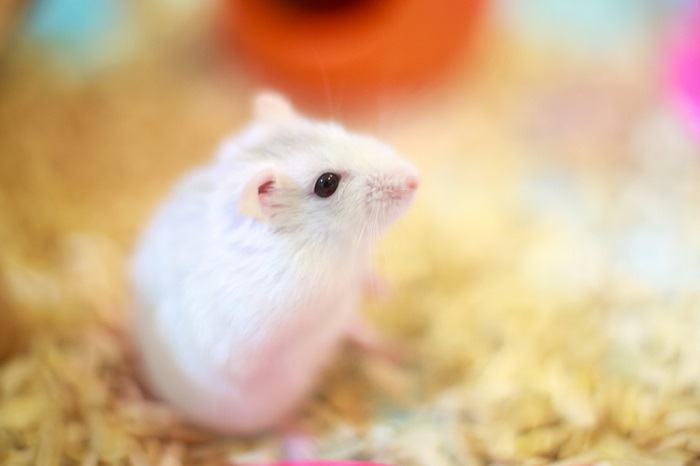
When it comes to finding the best hamster cage, the general rule is that the bigger the better! The more square inches you can manage, the happier your hammie will be. A minimum space should be 2 feet by 1 foot. There are two options for housing: either one of the wire cages with a plastic floor or an aquarium style hamster home with a ventilated top. If you opt for a wire hamster cage, make sure the wire bars are close enough that small pets cannot escape! Dwarf hamster species such as the winter white dwarf hamster, but also the Campbells and the Roborovski can fit through some standard wire meshes. There are some excellent examples of hamster cages here.
The bottom of the enclosure should be covered in around 3 inches of soft bedding such as shredded paper or aspen shavings. Read more about hamster bedding here.
Included in the hamster cage should be fresh water from a water bottle, some hamster toys and a hamster wheel for exercise.
Nutrition
Winter white dwarf hamsters will do well on a commercial hamster food – look for one formulated for dwarf hamsters. There are usually a few options at pet stores or take a look here. Hamsters eat in small bursts, and do hoard food, so it is usual to put out a day’s food ration into a food bowl and leave it out for them to graze on throughout the day. Discard uneaten food after 24 hours. Top tip: place food into the cage just as your hammie is waking up and ready to eat – and watch those cheek pouches fill!
Some hamster owners like to supplement a commercial hamster food with some fresh food such as greens and carrot. These should be given in moderation, and discarded if not eaten after a few hours.
Fresh water should always be available. Some hamsters prefer a water dish to a water bottle, it may be worth seeing which one your hammie prefers.
Health Problems
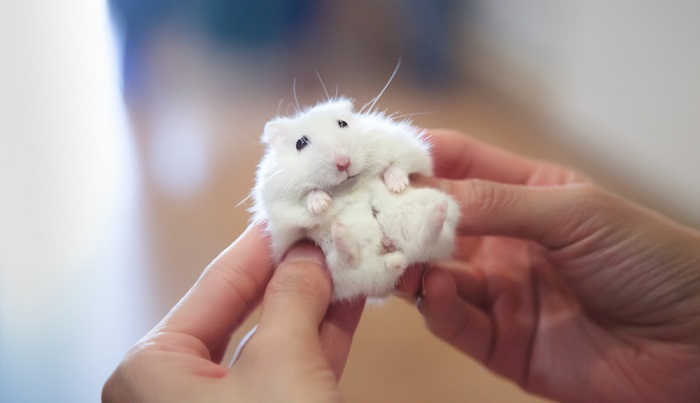
This Russian dwarf hamster suffers from similar ailments to other types of hamster. First-time owners may want to read up on hamster care here.
Some common health problems include:
- Wet tail
- Injuries from hamster cages or companions
- Respiratory illness
- Skin complaints.
Always speak to your veterinarian if you are concerned about your small pets. The typical lifespan of a winter white dwarf hamster is around 1 to 3 years.
Frequently Asked Questions
Are winter white dwarf hamsters friendly?
These dwarf hamsters are typically friendly and tolerant to gentle handling and interaction.
How big do winter white dwarf hamsters get?
Their adult size is around 3-4 inches long, weighing around 1-2 ounces.
How cold is too cold for dwarf hamsters?
Dwarf hamsters do well at temperatures around 68-72 degrees Fahrenheit, although can tolerate a few degrees either side. If the temperature gets too cold, down to around 60 degrees, your hamster may enter a state of hibernation.
Are winter white dwarf hamsters easy to tame?
Hamsters will never be fully tame, but most winter whites will learn to tolerate gentle handling with time and patience. Starting small sessions of gentle handling from a young age is key to a good response.

